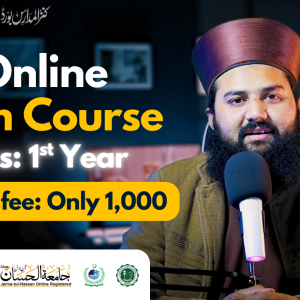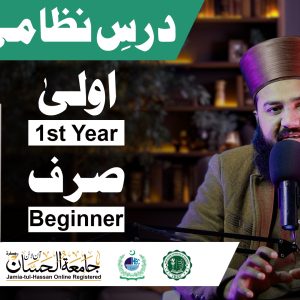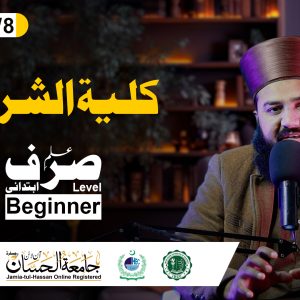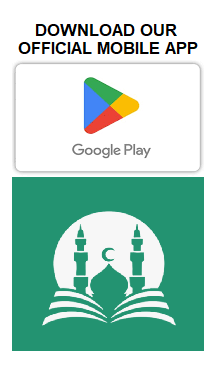Essential Guide to Learn Quranic Arabic
If you’ve ever been intrigued by the beauty and depth of the Quran and wish to understand it in its original language, you’re not alone. Learning Quranic Arabic opens up a profound connection with the text, allowing you to grasp its nuances and meanings firsthand. This guide will help you navigate the path to mastering Quranic Arabic, whether you’re a complete beginner or looking to deepen your existing knowledge. The journey of learning this sacred language is a transformative experience that goes beyond mere translation, offering insights into the divine narrative and enhancing your spiritual practice.
The Quran is not just a religious text but a masterpiece of linguistic artistry. Understanding it in its original language allows you to appreciate its rhythm, structure, and eloquence. As you embark on this journey, you’ll discover that each word in Quranic Arabic is rich with meaning and purpose, designed to convey messages that resonate deeply with the human soul. This guide aims to provide you with the tools and strategies necessary to unlock these layers of meaning and integrate them into your spiritual journey.
📚 Explore Our Latest Islamic Courses 📚

Why Learn Quranic Arabic?
Understanding Quranic Arabic is more than just an academic pursuit; it’s a spiritual journey that enriches your connection to the Quran. When you learn the language of the Quran, you gain a deeper appreciation for its messages and themes. This knowledge enhances your ability to engage with the text during prayer and study. Moreover, it allows you to experience the Quran in a way that translations cannot fully convey, as translations often lose subtle meanings and the intricate beauty of the original language.
📚 Explore Our Latest Islamic Courses 📚
Learning Quranic Arabic also serves as a bridge to a broader understanding of Islamic culture and history. It provides insights into the historical context of the Quranic revelations, offering a more comprehensive view of the Islamic faith. This knowledge not only enriches personal faith but also fosters a greater appreciation for the rich tapestry of Islamic tradition and its impact on various cultures worldwide.
Benefits of Learning Quranic Arabic
- Deeper Understanding: Access the true essence and intricacies of the Quranic text. By understanding the original language, you can appreciate the linguistic miracles of the Quran, such as its word choices, grammatical structures, and stylistic features that are often lost in translation. This deeper understanding also allows you to interpret the text more accurately, leading to more insightful reflections and applications in your daily life.
- Spiritual Growth: Strengthen your faith and connection to Islam. As you delve into Quranic Arabic, you find that your prayers and recitations become more meaningful. The words of the Quran resonate more deeply, fostering a stronger spiritual connection and a more profound sense of peace and fulfillment. This spiritual growth is often accompanied by a heightened sense of purpose and commitment to the principles of Islam.
- Cultural Insight: Gain a better understanding of Arabic culture and history. Learning Quranic Arabic opens doors to exploring the rich literary heritage of the Arab world. It provides context for understanding the cultural and historical background of the Quranic revelations, offering a more nuanced perspective on Islamic history and the development of Muslim societies over time. This cultural insight enriches your appreciation of the diverse traditions and contributions of the Islamic world.
How to Get Started with Learning Quranic Arabic
Embarking on this journey might seem daunting, but with the right approach and resources, it becomes manageable and rewarding. The key is to approach your studies with patience and persistence, recognizing that mastering a new language is a gradual process. By setting realistic expectations and celebrating small milestones, you can maintain motivation and make steady progress towards your goal.
📚 Explore Our Latest Islamic Courses 📚
To begin, it’s essential to create a structured study plan that accommodates your lifestyle and learning preferences. This plan should include a mix of formal lessons, self-study, and practice, allowing you to build a comprehensive understanding of Quranic Arabic. Additionally, surrounding yourself with supportive resources and a community of fellow learners can provide encouragement and accountability as you progress on your journey.
Step 1: Set Clear Goals
Before diving into study, define your objectives. Are you learning for personal enrichment, academic study, or religious devotion? Clear goals will guide your study plan and keep you motivated. Consider what you hope to achieve through your studies, whether it’s understanding specific Quranic verses, improving your recitation during prayer, or gaining a broader comprehension of Islamic teachings.
📚 Explore Our Latest Islamic Courses 📚
Having clear goals also helps you measure your progress and stay focused on your priorities. Break down your goals into smaller, manageable tasks, and establish a timeline for achieving them. This approach not only makes the learning process more approachable but also provides a sense of accomplishment as you reach each milestone.
Step 2: Choose the Right Course
There are numerous online Quranic Arabic courses available. Look for courses that suit your learning style and schedule. Some popular options include:
📚 Explore Our Latest Islamic Courses 📚
- Free Online Resources: Websites offering free lessons on Quranic Arabic, such as Bayyinah TV and Quranic, provide accessible starting points for beginners. These resources often include video lessons, interactive exercises, and downloadable materials to aid your learning.
- Structured Courses: Platforms like Quranic Arabic for All and Quranic Language Made Easy offer structured learning with progression tracking. These courses typically provide a comprehensive curriculum, covering vocabulary, grammar, and pronunciation, along with assessments to track your progress and reinforce your understanding.
When choosing a course, consider factors such as the level of interactivity, the availability of support from instructors or tutors, and the flexibility to learn at your own pace. Reading reviews and seeking recommendations from other learners can also help you identify a course that aligns with your needs and goals.

📚 Explore Our Latest Islamic Courses 📚
Step 3: Focus on Key Areas
- Vocabulary: Start with the most common words in the Quran. Flashcards and apps like Anki can be helpful tools. Building a solid vocabulary foundation enables you to recognize and understand frequently occurring words, making it easier to grasp the overall meaning of Quranic passages.
- Grammar: Understanding Arabic grammar is crucial for interpreting Quranic texts. Consider enrolling in an Arabic grammar course tailored for Quranic study. A strong grasp of grammar allows you to appreciate the syntactic structures and stylistic devices used in the Quran, enhancing your comprehension and interpretation skills.
- Practice: Regular practice is essential. Engage with the Quran daily, even if it’s just for a few minutes. Consistent practice helps reinforce what you’ve learned and improves your fluency in reading and understanding Quranic Arabic. Listening to Quranic recitations and practicing aloud can also enhance your pronunciation and intonation.
Recommended Resources for Learning Quranic Arabic
To effectively learn Quranic Arabic, leverage a variety of resources that cater to different aspects of the language. By combining multiple learning tools, you can create a well-rounded study plan that addresses vocabulary, grammar, pronunciation, and comprehension.
Online Courses and Tutorials
- Bayyinah TV: Offers comprehensive Quranic Arabic lessons. Bayyinah TV is known for its engaging teaching style and focus on both language and context, making it a valuable resource for learners seeking a holistic understanding of Quranic Arabic.
- Quranic: Provides interactive and engaging lessons for beginners. The platform’s user-friendly interface and interactive exercises make learning enjoyable and effective, particularly for those new to the language.
- Firdaws Academy: Offers personalized one-on-one lessons with experienced tutors. This personalized approach allows you to receive tailored feedback and guidance, addressing your unique learning needs and challenges.
Books and Reference Materials
- “Arabic Through the Quran” by Alan Jones: A classic resource that simplifies learning the language. This book is designed to introduce learners to Quranic Arabic through carefully selected examples and exercises, building a solid foundation in vocabulary and grammar.
- “Madinah Arabic Reader” series: Ideal for beginners looking to build a strong foundation. This series provides a gradual introduction to Quranic Arabic, with a focus on practical application and reinforcement of key concepts through exercises and drills.
Apps and Digital Tools
- Mishkah Academy App: Offers a convenient way to learn and practice Quranic Arabic on the go. The app includes interactive lessons, quizzes, and audio resources to support your studies and make learning accessible anytime, anywhere.
- Anki Flashcards: For memorizing vocabulary and grammar rules effectively. Anki’s spaced repetition system helps reinforce memory retention, making it an invaluable tool for mastering the extensive vocabulary of the Quran.

📚 Explore Our Latest Islamic Courses 📚
by Surface (https://unsplash.com/@surface)
Tips for Success in Learning Quranic Arabic
Learning a new language takes time and patience, but with dedication, you can achieve fluency. It’s important to approach your studies with a positive mindset and a willingness to embrace challenges as opportunities for growth. Here are some tips to help you succeed in your journey to learn Quranic Arabic:
📚 Explore Our Latest Islamic Courses 📚
Consistency is Key
Set aside time each day for study. Even if it’s just 15 minutes, daily practice reinforces learning and builds momentum. Consistency helps establish a routine, making it easier to integrate language learning into your daily life. Over time, these small, regular efforts accumulate, leading to significant progress in your understanding and fluency.
To maintain consistency, consider setting specific times for study and incorporating language practice into your existing routines. For example, you might review vocabulary during your commute or listen to Quranic recitations while exercising. By making language learning a natural part of your day, you’ll be more likely to stick with it and achieve your goals.
📚 Explore Our Latest Islamic Courses 📚
Engage with a Community
Join online forums or local study groups to connect with others learning Quranic Arabic. Sharing experiences and resources can enhance motivation and provide support. Engaging with a community of learners allows you to exchange ideas, ask questions, and receive feedback, creating a collaborative learning environment that encourages growth and development.
Being part of a community also offers opportunities for practice and accountability. Whether you’re participating in discussions, attending study sessions, or collaborating on projects, interacting with others can reinforce your learning and boost your confidence. Look for communities that align with your learning style and interests, and don’t hesitate to reach out and get involved.
📚 Explore Our Latest Islamic Courses 📚
Seek Guidance from Teachers
If possible, learn from qualified teachers who can provide personalized feedback and address your specific learning needs. Teachers can offer insights into complex topics, help clarify misunderstandings, and provide encouragement and motivation as you progress. Working with a teacher also allows for tailored instruction that aligns with your pace and goals, making your learning experience more effective and efficient.
When seeking a teacher, consider their experience, teaching style, and availability. Look for instructors who are knowledgeable about Quranic Arabic and have a track record of successful student outcomes. If in-person instruction isn’t feasible, explore online tutoring options, which can offer flexibility and convenience for learners with busy schedules.
📚 Explore Our Latest Islamic Courses 📚
Overcoming Common Challenges
Every learner faces obstacles, but understanding these challenges can help you overcome them. By identifying potential difficulties and developing strategies to address them, you can navigate the learning process more smoothly and maintain your motivation.
Challenge 1: Complex Grammar
Arabic grammar can be intimidating, but breaking it down into small, manageable sections makes it less overwhelming. Use grammar courses that focus specifically on Quranic Arabic. These courses often provide step-by-step explanations and practical exercises to reinforce your understanding of grammatical rules and structures.
Additionally, practicing with real Quranic texts can help you apply grammar concepts in context, deepening your comprehension and retention. As you gain confidence in your grammar skills, you’ll find it easier to interpret and analyze Quranic verses, enhancing your overall understanding of the text.
Challenge 2: Vocabulary Retention
The Quran contains a rich vocabulary. Use spaced repetition techniques and flashcards to aid memorization. Spaced repetition is a proven method for enhancing memory retention, as it involves reviewing information at strategically timed intervals to reinforce learning. Flashcards, whether physical or digital, can be an effective tool for practicing vocabulary and testing your recall.
To further support vocabulary retention, try incorporating new words into your daily practice. Use them in sentences, write them out, or associate them with images or stories to make them more memorable. Engaging with the vocabulary in different ways helps reinforce your understanding and recall of the words.
Challenge 3: Pronunciation
Arabic pronunciation can be tricky. Listening to Quranic recitations and practicing aloud helps improve accuracy. By imitating the recitations of skilled Quranic readers, you can learn the correct pronunciation, intonation, and rhythm of the language. Regular practice aloud also helps you develop confidence and fluency in speaking Quranic Arabic.
To refine your pronunciation, consider recording yourself and comparing your recitations to those of native speakers. This exercise allows you to identify areas for improvement and track your progress over time. Additionally, working with a teacher or language partner can provide valuable feedback and guidance on pronunciation.
Conclusion
Learning Quranic Arabic is a journey that offers spiritual, intellectual, and cultural rewards. By setting clear goals, utilizing diverse resources, and maintaining consistent practice, you’ll find yourself increasingly attuned to the Quran’s divine messages. Remember, patience and perseverance are your greatest allies on this path. May your efforts be blessed and fruitful.
For those ready to begin this enlightening journey, now is the perfect time to explore the best online Quranic Arabic courses and immerse yourself in the timeless language of the Quran. The rewards of understanding the Quran in its original language are immense, enriching your spiritual practice and deepening your connection to Islamic teachings. As you embark on this path, embrace the challenges and celebrate the growth and transformation that come with each step forward.







